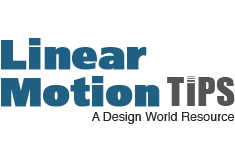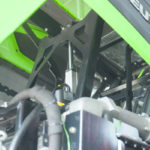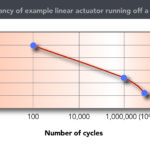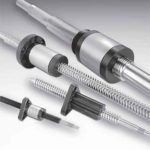Among the methods available for converting rotary motion to linear, leadscrews are a mainstay. A leadscrew, or power screw, is a threaded rod or bar that translates rotational motion into linear motion. Leadscrews generate sliding rather than rolling friction between a nut and the screw. Consequently, higher friction means a lower overall efficiency. And efficiency, when talking about leadscrews, is simply the ability to convert torque to thrust while minimizing mechanical losses.
Many motion designs incorporate leadscrews, driving axes on machines big and small. They usually sport higher ratings than comparable ballscrews thanks to more contact between the nut and screw load surfaces. Recently, innovations in materials and helix geometry address old issues associated with leadscrew friction, bringing it down to better than 0.10 in some cases; making them a good fit for fast and dynamic applications. In fact, there’s also been an uptick in leadscrew use in machines for 3D printing, manufacturing and medical applications.
A host of different industries are adopting new leadscrew components and linear systems. Designers of kiosk and automated retail applications, for instance, are looking for ways to simplify machines, reduce design weight and simplify assembly and maintenance. In a similar way, both additive manufacturing (3D printing) and traditional subtractive processes (plasma cutter, laser and waterjet manufacturing) are driving new leadscrew uses. The same holds true for factory automation.
Choosing the right leadscrew for a linear motion application involves several considerations including screw pitch and lead, thrust, speed, accuracy and repeatability.
The two most important factors in determining the performance of a leadscrew are the screw pitch and lead. The pitch is the linear distance between the threads, while the lead is the linear distance the nut travels. Speed is another critical parameter. Leadscrews have a critical velocity, which is the rotational velocity limit of the screw. Reaching this limit induces vibrations in the leadscrew.
Accuracy and repeatability are also important factors to consider. The accuracy of a leadscrew is a measure of how close to a desired end point the assembly can move a load to within a given tolerance. The accuracy of the leadscrew will mostly determine the system’s accuracy. On the other hand, repeatability is a measure of how well a leadscrew assembly can repeatedly move a load to the same position.

When it comes to the kinds of leadscrews engineers are specifying in their designs, there are clearly more integrated or pre-engineered systems being used. Choosing these types of systems can reduce engineering costs as well as design time.
One example of a leadscrew design in a medical application is a part-marking device from Roland. The MPX-90M direct part-marking device allows for marking surgical instruments and tools with unique device identification (UDI) numbers as directed by the U.S. Food & Drug Administration (FDA). Unlike traditional dot-peen technology, the MPX-90M accurately imprints 2D DataMatrix barcodes down to 1 mm2 on hard metal medical instruments. In fact, the MPX-90M prints on materials ranging from surgical steel, titanium and aluminum to matte plastics and acrylic.
The marks, 30-µm deep, won’t scratch off either. An automated head height function ensures proper image placement while an adjustable X-Y table holds flat and oddly shaped parts. Motor-driven leadscrews move the marking head over the part during engraving.






Yeah we are starting to see some of the new printers come out with this leadscrew technology recently.